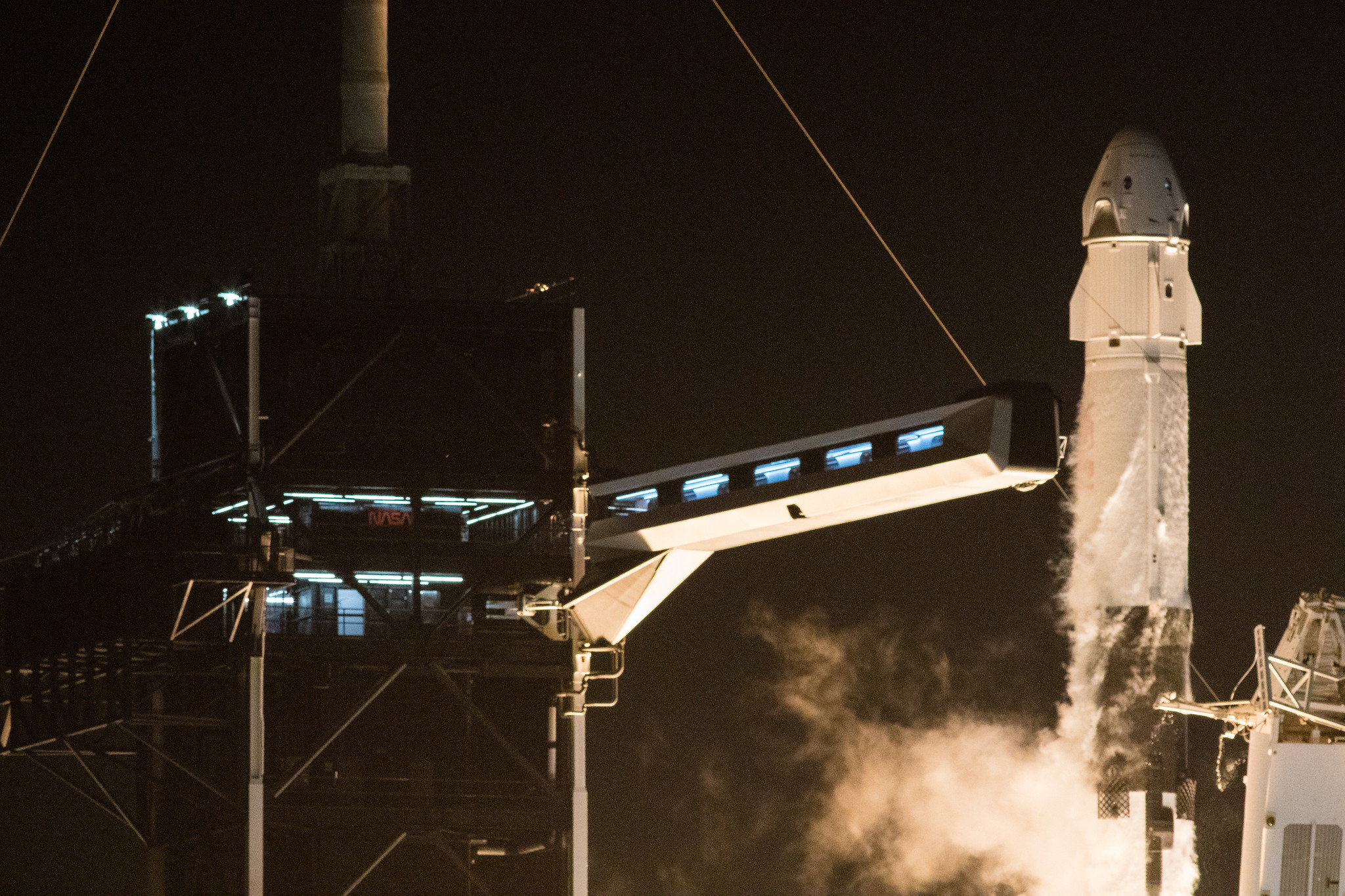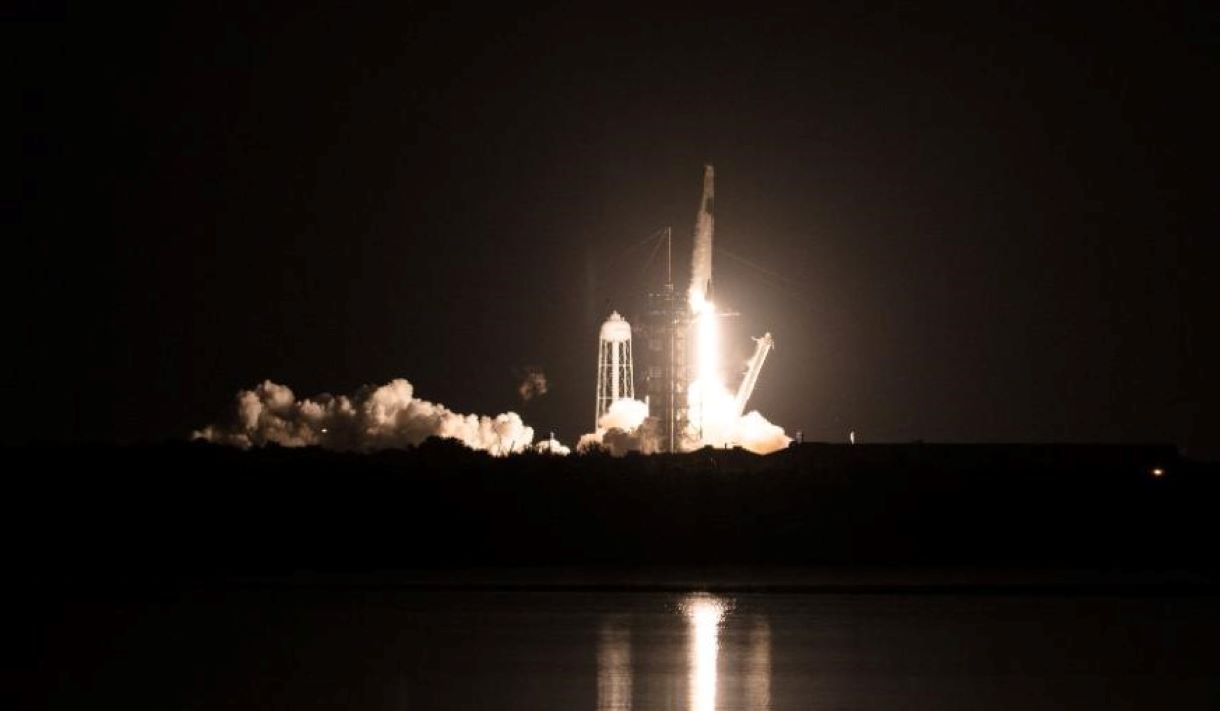SpaceX, Elon Musk’s US space company, has successfully transported four astronauts into orbit, which in the next few hours will reach the International Space Station (ISS). The launch of the four astronauts represents an important achievement for NASA and SpaceX.
SpaceX: the launch of the 4 astronauts
The flight, called Crew-1, took off at 12.27 am on Monday, UK time. It is part of the first fully operational mission of Crew Dragon, the transport capsule developed by SpaceX on behalf of NASA. It is the second launch with humans from US soil since 2011.
The Dragon capsule, which has been named Resilience by its crew because of this year’s many challenges, it should arrive at the space station on Tuesday 17 and it will remain there until spring. The flight to the space station should be entirely automated, although the crew can take control if needed.
SpaceX founder and chief executive Elon Musk was obliged to monitor the launch of the 4 astronauts from afar rather than be at Kennedy because of a probably moderate case of Covid-19.
The four astronauts who took of on Mondayare Shannon Walker, Victor Glover, Michael Hopkins, and Japan Aerospace Exploration Agency astronaut Soichi Noguchi. They will be joining two Russians and one American who flew to the space station last month from Kazakhstan.
Crew Dragon: an innovative space capsule

Crew Dragon is a rather comfortable space capsule and the only spacecraft that so far could guarantee the transport of astronauts to the ISS. Unlike the Soyuz, which allow for a maximum of three astronauts to be brought into orbit, the Crew Dragon can carry up to four, with the possibility of carrying the ISS crew from six to seven members.
Crew-1 astronauts will join the Station’s current occupants: NASA astronaut Kate Rybins and Russian cosmonauts Sergey Kud-Sverchkov and Sergey Ryzhikov, who have been orbiting the Earth since last October. It has not happened for almost ten years that the ISS was so crowded and this could lead to some initial inconvenience, waiting to reorganize part of the spaces on board to offer accommodation to everyone.
- READ MORE: The Perseids meteor show 2020, when and how to see it

